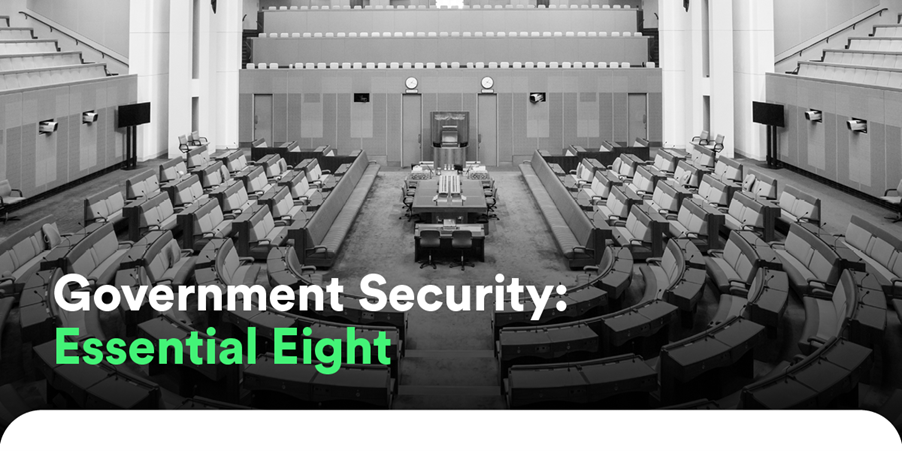Government security frameworks: the Essential Eight.

The Federal Government puts laws in place to ensure big organisations take data protection seriously. But they also offer resources to help companies of every size stay on top of cybersecurity.
Keeping up with compliance: a guide to the Essential Eight
Australia’s online world is constantly evolving, and the government is putting measures in place to strengthen the country’s cyber defences. As cyberattacks become more frequent globally, the Australian Federal Government is placing greater emphasis on cybersecurity for businesses. Their goal is to ensure Australian companies have robust safeguards in place to counter these ever-changing threats.
A critical element of the government’s strategy is the Essential Eight, a set of cybersecurity guidelines developed by the Australian Cyber Security Centre (ACSC). By adhering to these guidelines and maintaining compliance, businesses can significantly reduce the potential damage caused by cybercrime.
Understanding the Essential Eight
The Essential Eight is a comprehensive set of cybersecurity strategies designed to enhance an organization’s preparedness against cyber threats. While following these guidelines isn’t mandatory, it can significantly improve your cybersecurity resilience and offer better protection against evolving threats.
Here’s a breakdown of the Essential Eight recommendations:
- Frequent patching: regularly updating applications and operating systems addresses vulnerabilities and helps to close security gaps.
- Multi-factor authentication (MFA): implementing MFA adds an extra layer of security by requiring more than just a password to log in. Think of it like a double lock on your digital door.
- Limit admin access: restricting administrative privileges to authorised users only minimizes the potential damage caused by unauthorized access.
- Application control: managing software execution through whitelisting or blacklisting helps to ensure only authorised programs run on your systems.
- Secure macros: macros can be useful tools, but they can also pose security risks. Careful configuration helps to mitigate these risks.
- Application hardening: strengthening commonly used applications against threats makes them more resistant to attacks.
- Regular backups: regularly backing up critical data ensures you have a copy in case of a cyberattack or other incident.
- User education: promoting cybersecurity awareness among staff empowers them to identify and avoid online threats.
The Essential Eight – benefits that can’t be overlooked
Following the Essential Eight isn’t a mandatory compliance requirement, but understanding and following its guidelines can make a real difference to your business. Here are some of the benefits:
- Enhanced data security
- Increased control over operations
- Reduced risk of human error
- Improved visibility into system activity
- Potential cost savings by avoiding security breaches
We encourage you to familiarise yourself with the Essential Eight. It’ll significantly improve your company’s cybersecurity posture and will give you confidence as you navigate the ever-changing landscape of compliance.
To learn more about the Essential Eight, take a look here.




